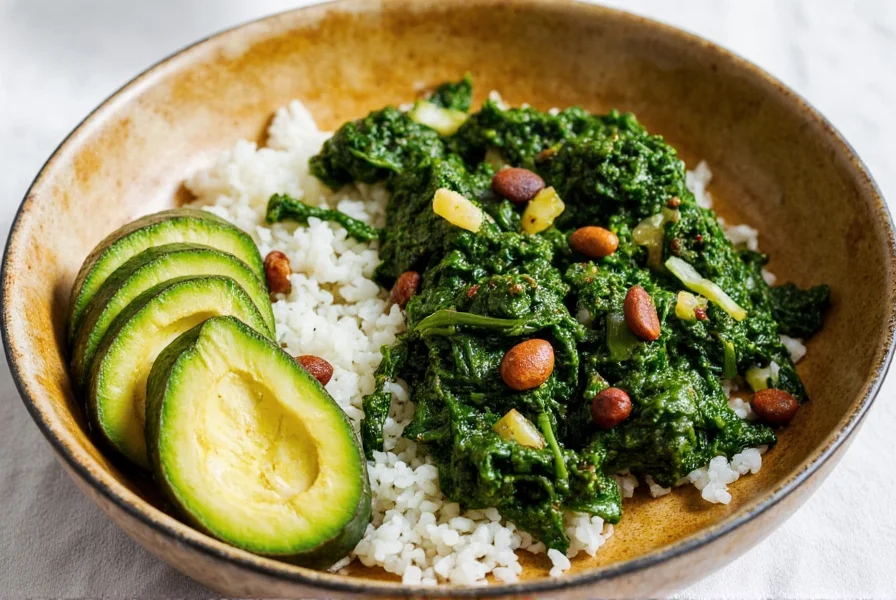
This guide provides authentic, step-by-step recipes for Ethiopian-style collard greens. Each recipe includes precise measurements, cooking techniques, and cultural context to ensure restaurant-quality results at home.
Why Collard Greens in Ethiopian Cuisine?
Collard greens (called gomen in Amharic) are a staple vegetable in Ethiopian households. They're hearty, nutritious, and perfect for absorbing the complex layers of spices that define Ethiopian cooking.
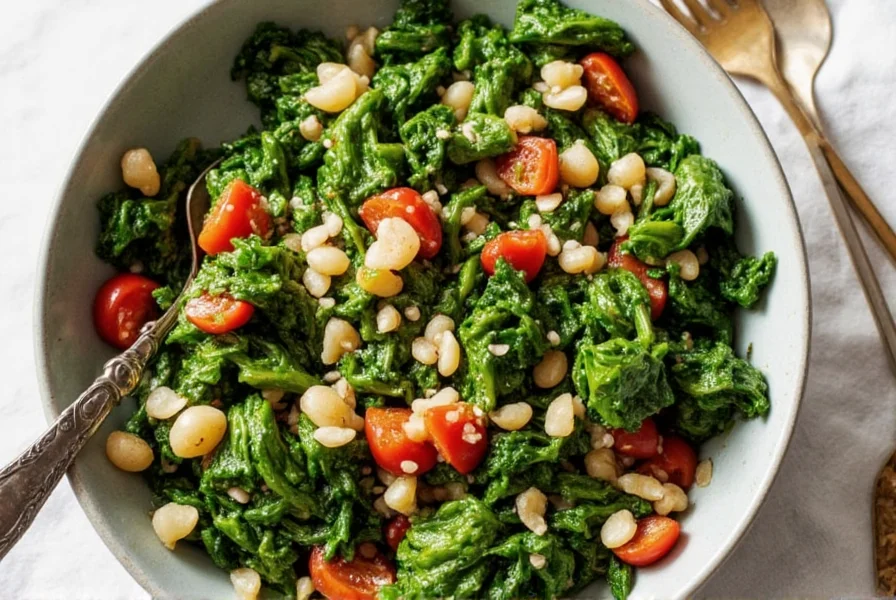
Beyond their texture and taste, collard greens hold nutritional value—packed with vitamins A, C, K, and fiber. But it's the way they're prepared that truly makes them shine in Ethiopian cuisine.
The Spice Basics Behind Ethiopian Flavor
Ethiopian cuisine is all about spice blends, and the star of most vegetable dishes is berbere. This fiery red powder is made from chili peppers, garlic, ginger, fenugreek, and other warming spices.
| Spice | Description | Flavor Profile | Best Used In |
|---|---|---|---|
| Berbere | Spicy blend with paprika base | Earthy, smoky, and hot | Soups, stews, and braised veggies |
| Nitir Kibbeh | Spiced clarified butter | Aromatic, savory, warm | Stir-fries, legumes, and lentils |
| Tikur Azmud | Black cardamom pods | Smoky, camphor-like aroma | Slow-cooked dishes and sauces |
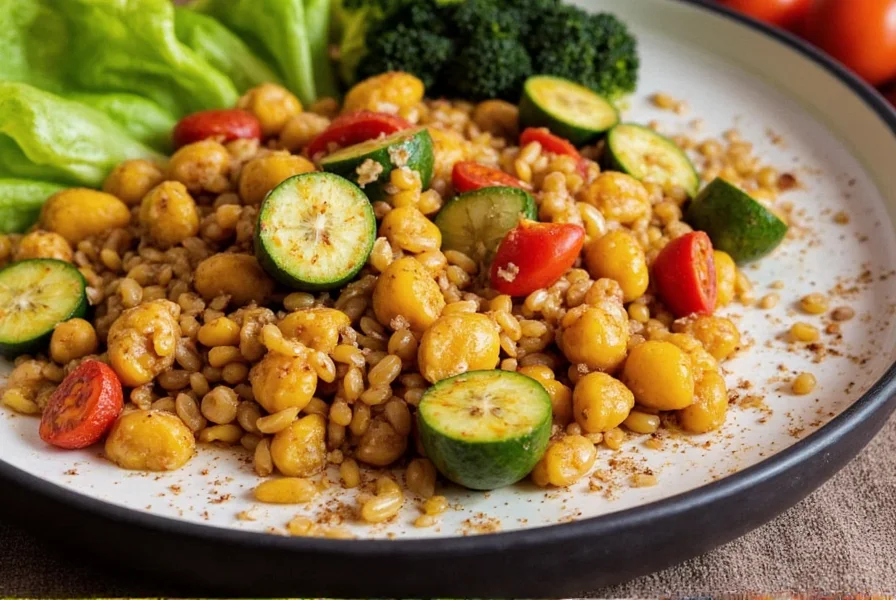
These spices carry centuries of tradition and regional variation. Mastering them will open up a new dimension in your Ethiopian collard green game.
Top 7 Ethiopian-Inspired Collard Green Recipes
Gomen Be'seghenat (Spiced Braised Collard Greens)
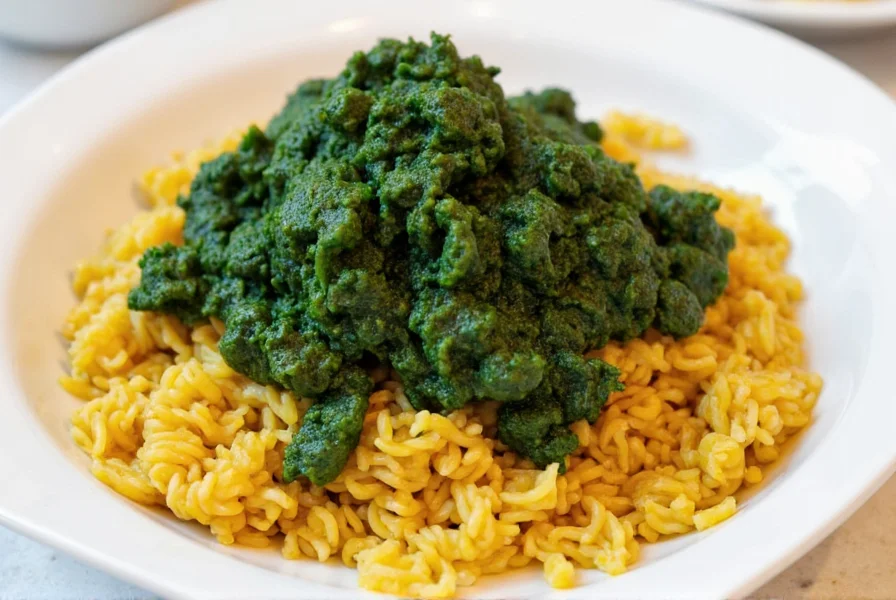
Prep time: 15 mins | Cook time: 30 mins | Servings: 4
Ingredients
- 1 bunch (2 lbs) fresh collard greens, stems removed and chopped
- 2 tbsp berbere spice blend
- 1 medium onion, finely diced
- 2 tbsp nitir kibbeh (spiced clarified butter)
- 2 cloves garlic, minced
- 1 tsp fresh ginger, grated
- 1 tbsp tomato paste
- ½ cup vegetable broth
- Salt to taste
Instructions
- Blanch collard greens in boiling water for 2 minutes, then drain and chop into 1-inch pieces.
- Heat nitir kibbeh in a large pot over medium heat. Add onions, garlic, and ginger; sauté until translucent (5 mins).
- Add berbere and tomato paste, stirring for 1 minute to release flavors.
- Stir in collard greens and vegetable broth. Cover and simmer for 20-25 minutes until tender.
- Season with salt. Serve hot with injera or rice.
Doro Gomen (Chicken and Collard Greens)
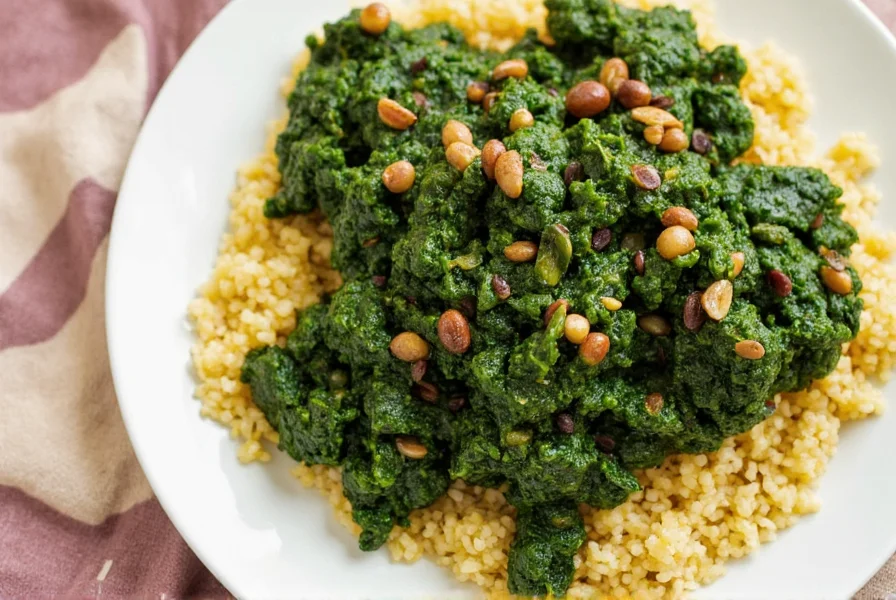
Prep time: 20 mins | Cook time: 40 mins | Servings: 4
Ingredients
- 1 lb boneless chicken thighs, cut into 1-inch pieces
- 1 bunch collard greens, stems removed and chopped
- 3 tbsp berbere spice blend
- 2 onions, finely chopped
- 3 tbsp nitir kibbeh
- 2 tomatoes, diced
- 1 cup chicken broth
- 2 tbsp lemon juice
Instructions
- Sear chicken in nitir kibbeh until golden (5 mins). Remove and set aside.
- Sauté onions until caramelized. Add berbere and cook for 2 minutes.
- Return chicken to pot. Add tomatoes, broth, and collard greens.
- Simmer covered for 25 minutes until chicken is tender and greens are soft.
- Finish with lemon juice. Serve with injera.
Shiro Gomen (Chickpea Puree with Collards)
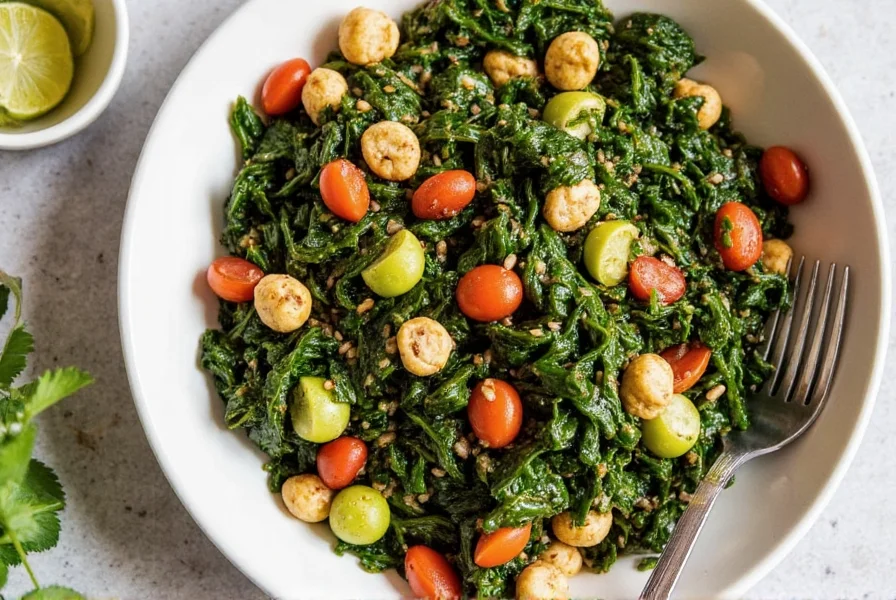
Prep time: 10 mins | Cook time: 25 mins | Servings: 4
Ingredients
- 1 cup shiro powder (chickpea flour)
- 2 cups water
- 1 bunch collard greens, chopped
- 2 tbsp berbere
- 1 onion, diced
- 2 tbsp nitir kibbeh
- 1 tsp cumin
Instructions
- Whisk shiro powder with water until smooth. Set aside.
- Sauté onion in nitir kibbeh until soft. Add berbere and cumin; cook 1 minute.
- Stir in shiro mixture and simmer for 10 minutes until thickened.
- Add collard greens and cook 5 more minutes until tender.
- Adjust seasoning. Serve warm.
Gomen Wot (Spicy Red Stew)
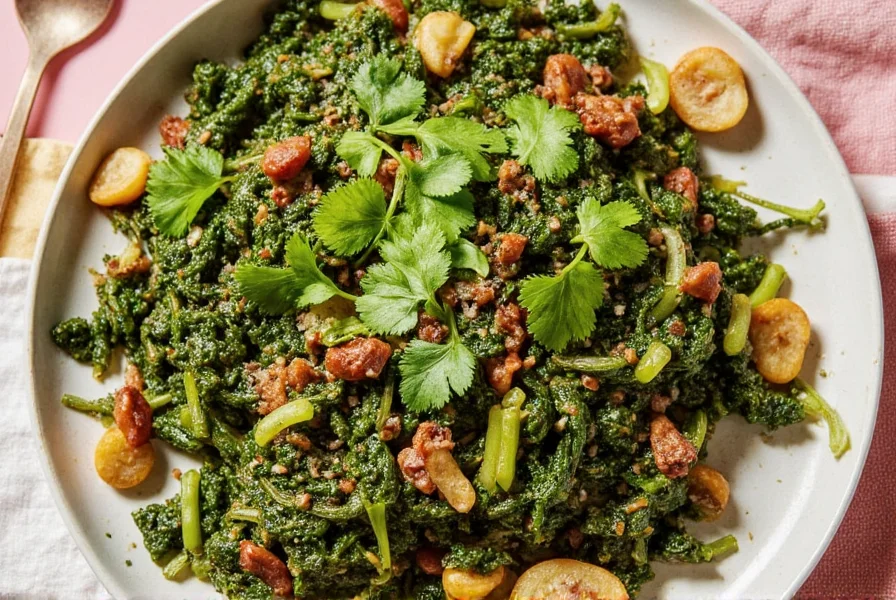
Prep time: 15 mins | Cook time: 35 mins | Servings: 4
Ingredients
- 1 bunch collard greens, chopped
- 3 tbsp berbere
- 2 tomatoes, pureed
- 1 onion, diced
- 3 tbsp nitir kibbeh
- 1 cup vegetable broth
- 1 tsp turmeric
Instructions
- Sauté onion in nitir kibbeh until golden. Add berbere and turmeric; cook 2 minutes.
- Stir in tomato puree and broth. Simmer 10 minutes.
- Add collard greens and simmer covered for 20 minutes until tender.
- Adjust salt and spice level. Serve with injera.
Fasolia Gomen Mix (Green Beans & Collards)
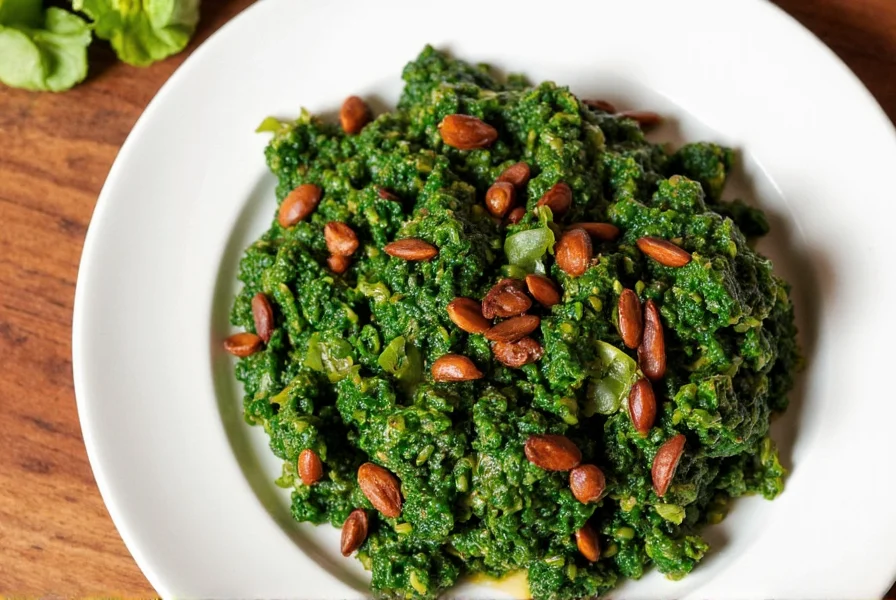
Prep time: 10 mins | Cook time: 20 mins | Servings: 4
Ingredients
- 1 bunch collard greens, chopped
- 1 cup green beans, trimmed and cut
- 2 tbsp berbere
- 1 onion, diced
- 2 tbsp nitir kibbeh
- ½ cup vegetable broth
Instructions
- Sauté onion in nitir kibbeh until soft. Add berbere; cook 1 minute.
- Add green beans and broth. Simmer 10 minutes until tender.
- Add collard greens and cook 5 more minutes.
- Season to taste. Serve immediately.
Kik Wot Gomen (Split Pea and Greens)
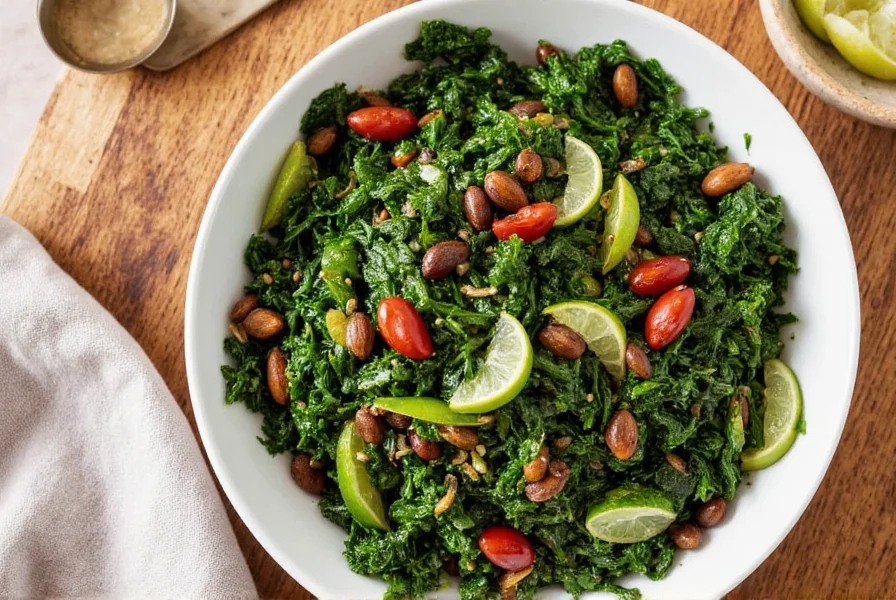
Prep time: 5 mins | Cook time: 40 mins | Servings: 4
Ingredients
- 1 cup red split peas, rinsed
- 1 bunch collard greens, chopped
- 3 tbsp berbere
- 1 onion, diced
- 3 tbsp nitir kibbeh
- 2 cups vegetable broth
Instructions
- Sauté onion in nitir kibbeh until soft. Add berbere; cook 1 minute.
- Add split peas and broth. Simmer 25 minutes until peas are tender.
- Stir in collard greens and cook 10 more minutes.
- Season with salt. Serve with injera.
Collard Greens Injera Wrap
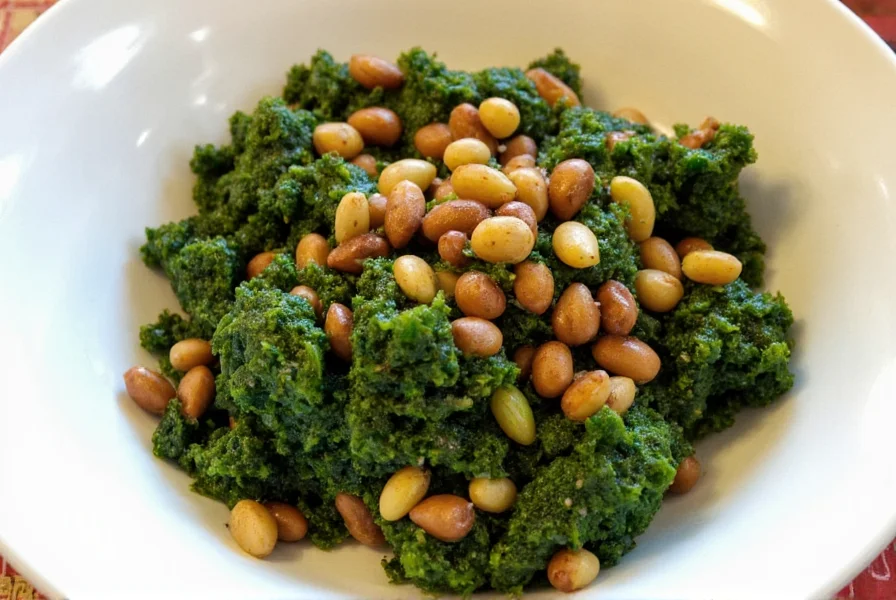
Prep time: 10 mins | Cook time: 5 mins | Servings: 2
Ingredients
- 2 large collard green leaves, blanched
- ½ cup Gomen Be'seghenat (recipe above)
- 2 tbsp shredded carrots
- 2 tbsp chopped cilantro
- 2 injera flatbreads
Instructions
- Blanch collard leaves for 1 minute, then pat dry.
- Place ¼ cup Gomen Be'seghenat on each injera.
- Top with carrots and cilantro.
- Wrap tightly and serve immediately.
Buying Guide for Spices & Ingredients
| Ingredient | Features | Where to Buy | Price Range | Recommended Use |
|---|---|---|---|---|
| Berbere Spice Blend | Premium quality, organic, small-batch | Amazon, Whole Foods, Etsy shops | $8–$15 per 4 oz | Main seasoning for collard greens and soups |
| Nitir Kibbeh (Spiced Butter) | Ready-made or DIY-friendly | International markets, specialty stores | $6–$12 per 8 oz jar | Sautéing vegetables and meats |
| Cooked Injera | Gluten-free, traditional sourdough flatbread | Ethiopian grocery stores, Amazon Fresh | $4–$10 per pack | Serving as a base or wrap |
| Canned Chickpeas | BPA-free, non-GMO, low sodium options available | Walmart, Target, Thrive Market | $0.99–$1.99 per can | Making shiro-based collard dishes |
| Whole Collard Greens | Fresh, organic, locally grown preferred | Local farmers' markets, Safeway, Trader Joe's | $1–$3 per bunch | All Ethiopian-style green dishes |
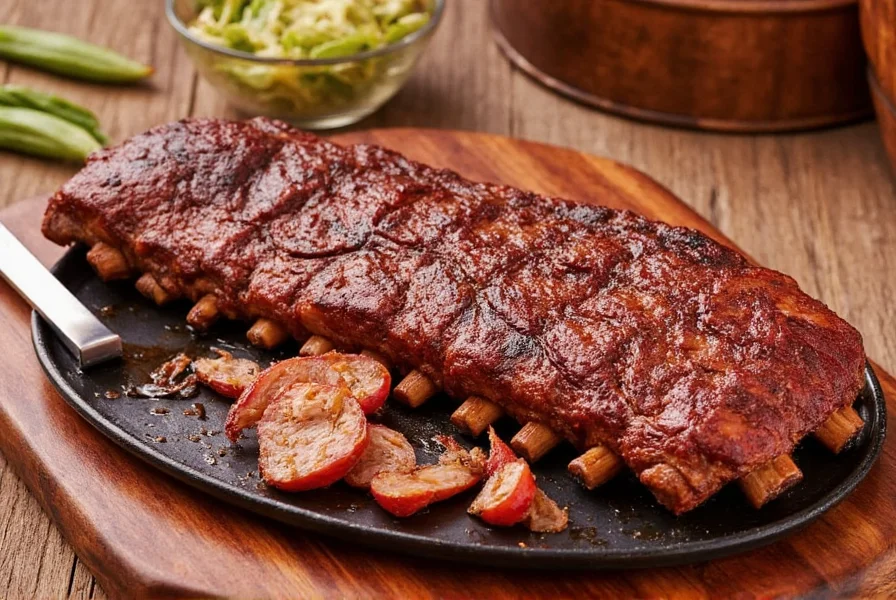
When buying spices like berbere, always check for freshness and origin. Ethiopian berbere from Eritrean or Ethiopian vendors tends to be spicier and more aromatic than generic supermarket blends.
Pro Tips for Cooking Ethiopian Greens Like a Pro
- Blanch first, then sauté: This reduces bitterness and helps the greens absorb spices better.
- Use nitir kibbeh instead of oil: For richer depth of flavor, especially in stews.
- Let it rest overnight: Like many stews, gomen tastes even better the next day.
- Add citrus at the end: A squeeze of lemon brightens up the deep, earthy flavors.
- Simmer slowly: Low heat helps the greens break down without turning mushy.
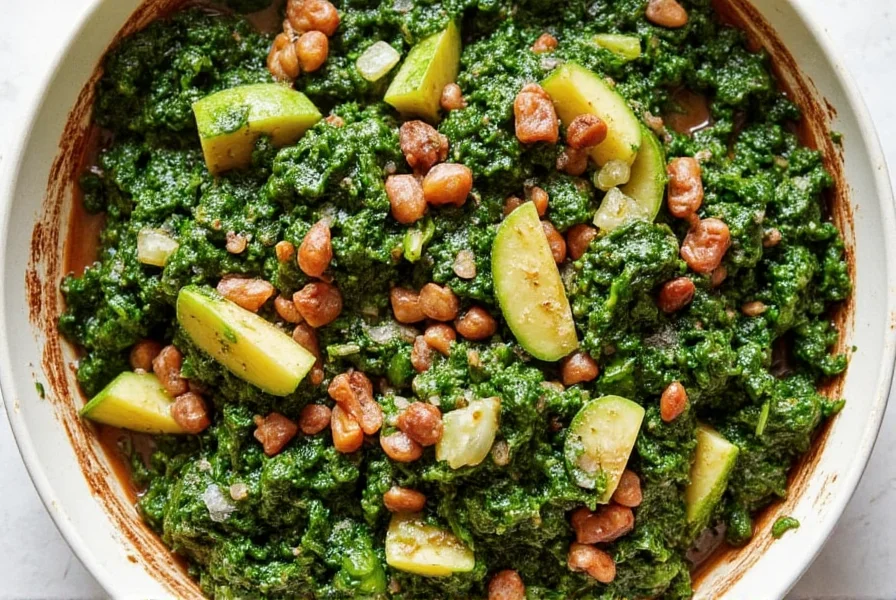
Don't rush the process—Ethiopian cooking rewards patience. Take your time, layer your spices, and let the aromas fill your kitchen.
Frequently Asked Questions
What are Ethiopian collard greens called in Amharic?
In Amharic, the official language of Ethiopia, collard greens are called "gomen" (ጎመን). When prepared in the traditional Ethiopian style, they're often referred to as "Gomen Be'seghenat" which means "collard greens with sauce" or simply "Gomen Wot" for the spicier stew version.
Can I make authentic Ethiopian collard greens without berbere spice?
While berbere is essential for authentic flavor, you can create a simplified version without it. Try combining paprika, cayenne pepper, garlic powder, ginger, fenugreek, and a touch of cinnamon as a substitute. However, for true Ethiopian taste, we recommend seeking out authentic berbere—many African or Middle Eastern grocery stores carry it, or you can find quality blends online. The flavor won't be exactly the same, but you'll still get delicious spicy greens.
How long do cooked Ethiopian collard greens last in the refrigerator?
Properly stored in an airtight container, Ethiopian collard greens will keep for 3-4 days in the refrigerator. Interestingly, like many stews and braised dishes, they often taste even better the next day as the flavors continue to meld. For longer storage, you can freeze them for up to 3 months—just be sure to use freezer-safe containers and leave some space for expansion.
Are traditional Ethiopian collard greens vegan?
Traditional Ethiopian collard greens (Gomen) can be made vegan by using vegetable oil or vegan butter instead of nitir kibbeh (spiced clarified butter). Many Ethiopian restaurants offer vegan versions of gomen, as Ethiopia has a significant Orthodox Christian population that observes fasting periods where animal products are avoided. During these fasting periods (which total about 180 days per year), Ethiopians eat exclusively plant-based meals.
What's the difference between Ethiopian gomen and Southern-style collard greens?
While both cuisines feature collard greens, the preparation differs significantly. Southern-style collard greens typically involve long simmering with ham hocks or smoked turkey for meatiness, often with vinegar for tang. Ethiopian gomen uses a complex blend of spices like berbere and mitmita, with aromatics like onions, garlic, and ginger, and is often cooked with nitir kibbeh (spiced butter). The Ethiopian version tends to be spicier with warm, complex spice notes rather than smoky meat flavors.
Can I substitute kale or other greens for collard greens in these recipes?
Yes, you can substitute other hearty greens like kale, mustard greens, or Swiss chard. However, collard greens have a unique texture that holds up well to the long cooking times in Ethiopian recipes. If substituting, add kale about 5-10 minutes later than collards since it cooks faster. Tender greens like spinach would need to be added near the end of cooking. The flavor will vary slightly with different greens, but the spice profile will still create a delicious Ethiopian-inspired dish.
How spicy are traditional Ethiopian collard greens?
The spiciness can vary depending on the berbere blend used. Traditional Ethiopian berbere contains multiple types of chili peppers, making it quite spicy—often comparable to cayenne pepper in heat level. However, many recipes balance the heat with onions, tomatoes, and the natural bitterness of the greens. If you're sensitive to spice, you can reduce the amount of berbere or look for "mild" berbere blends. Remember that Ethiopian cuisine often serves spicy dishes alongside cooling elements like yogurt or the sourdough flavor of injera bread.
What should I serve with Ethiopian collard greens for an authentic meal?
For a traditional Ethiopian meal, serve collard greens (gomen) with other vegetable stews (wots) on a large piece of injera (sourdough flatbread). Common pairings include misir wot (spiced lentils), shiro (chickpea stew), and tikil gomen (cabbage and carrot). All dishes are traditionally served family-style on a single platter, with everyone sharing from the same plate—a practice reflecting Ethiopian hospitality and community values. If you don't have injera, you can serve with rice or crusty bread.
Conclusion
Ethiopian collard greens recipes are more than just another leafy green dish—they're a celebration of culture, flavor, and spice mastery. Each of these seven authentic recipes includes precise measurements, step-by-step instructions, and cultural context to ensure restaurant-quality results at home.
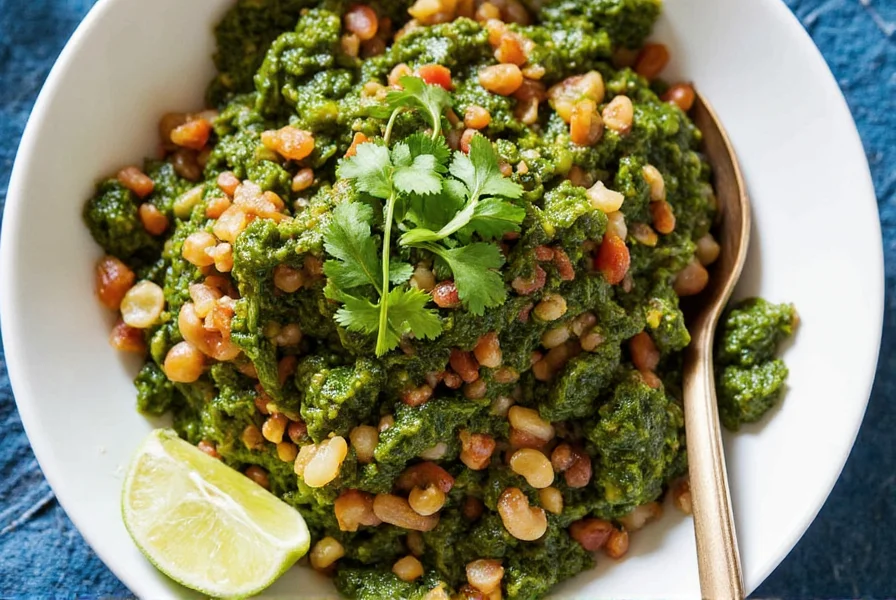
So grab your spices, chop those collards, and get ready to impress friends, family, or even just your own cravings with these soulful, satisfying greens. And remember—the secret is in the spice!

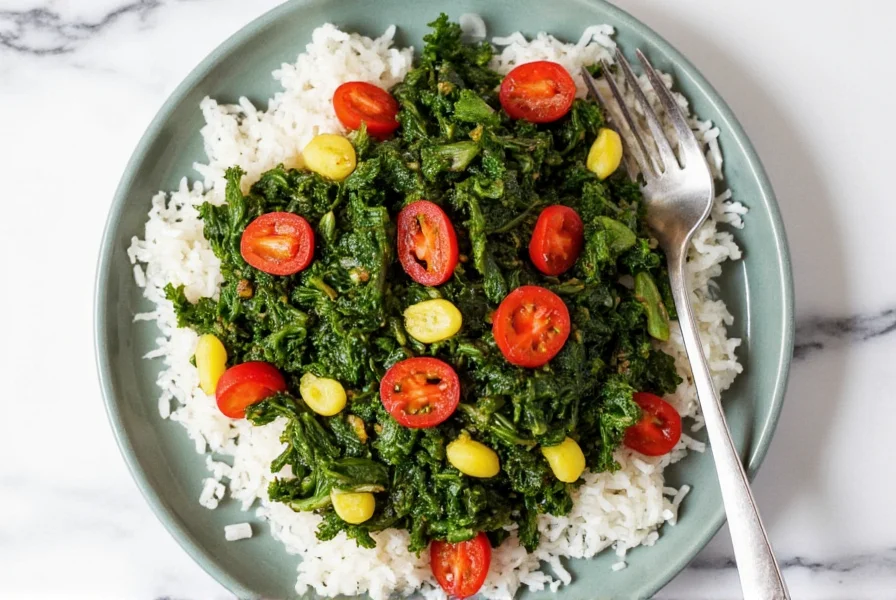









 浙公网安备
33010002000092号
浙公网安备
33010002000092号 浙B2-20120091-4
浙B2-20120091-4